We don’t know anything about “silk art” and honestly really never thought much about it before, but we said sure, why not, we’ll pop in and take a look. The National Silk Art Museum in Weston, Missouri is a relatively small museum in a relatively obscure spot with not much info out there about it, but it still manages to pack a punch.
The museum has “over 500 masterworks of French and English silk tapestries based on work by major artists from the 15th through the 20th century” (per their website). The tapestries weave silk textiles into pictures and images – some so detailed they look almost like a photograph or painting.
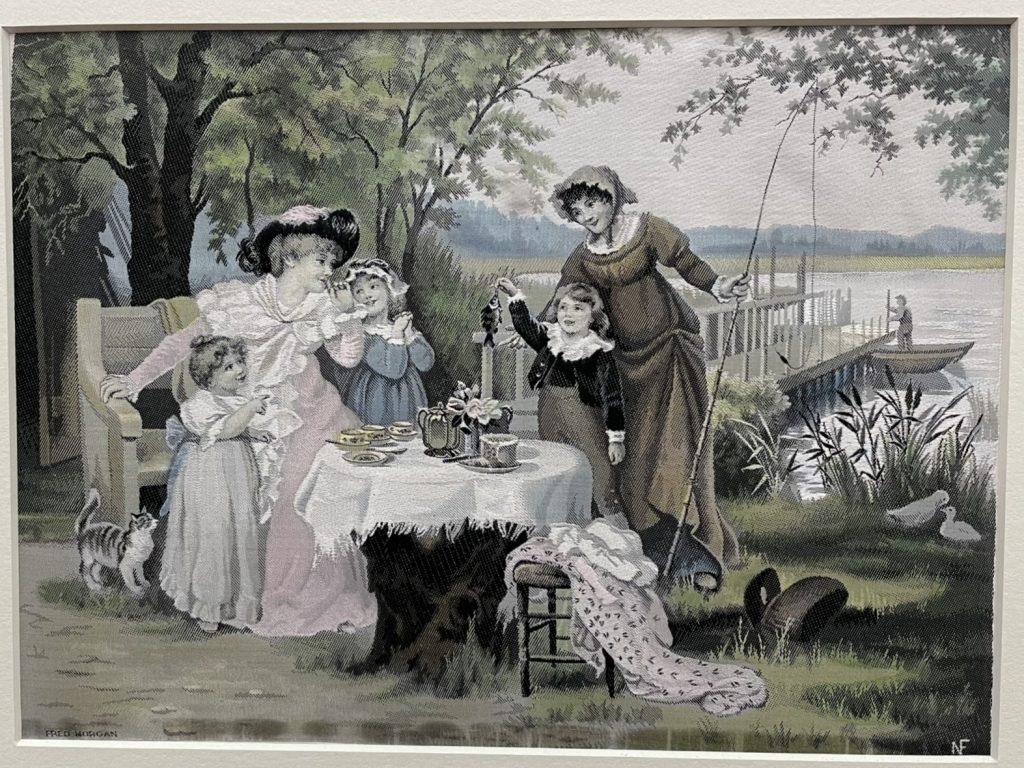
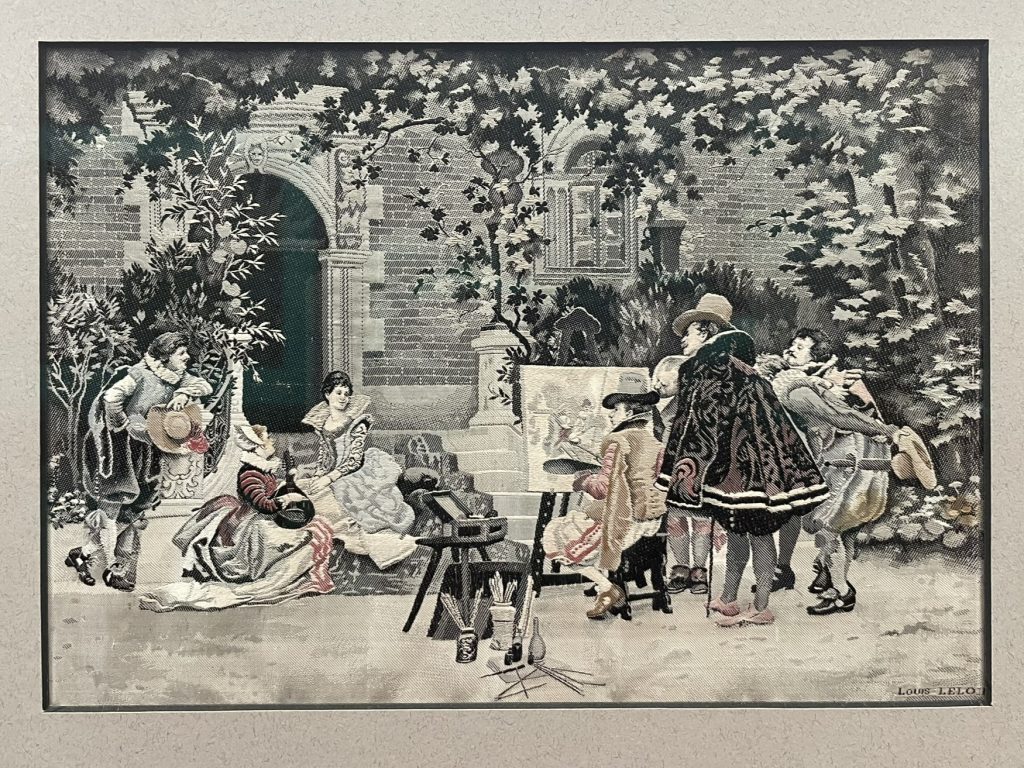
Indeed, the museum founder John Pottie’s first foray into the realm of silk art started with him bidding on what he thought was an old print, only to discover it was actually a piece of woven silk. This started him down the path, and here we are more than four decades later.
The pieces were made with a jacquard weaving machine, which was invented in the 1700s. It utilizes punch cards on mechanical looms – a precursor to the punch card technology that became the first IBM computers! Lest we oversimplify matters, one image the size of a piece of paper could take 24,000 individual punch cards!
The cover photo, woven by Neyret Freres in France, is of Jeunesse by Leopold Francois Kowalski.
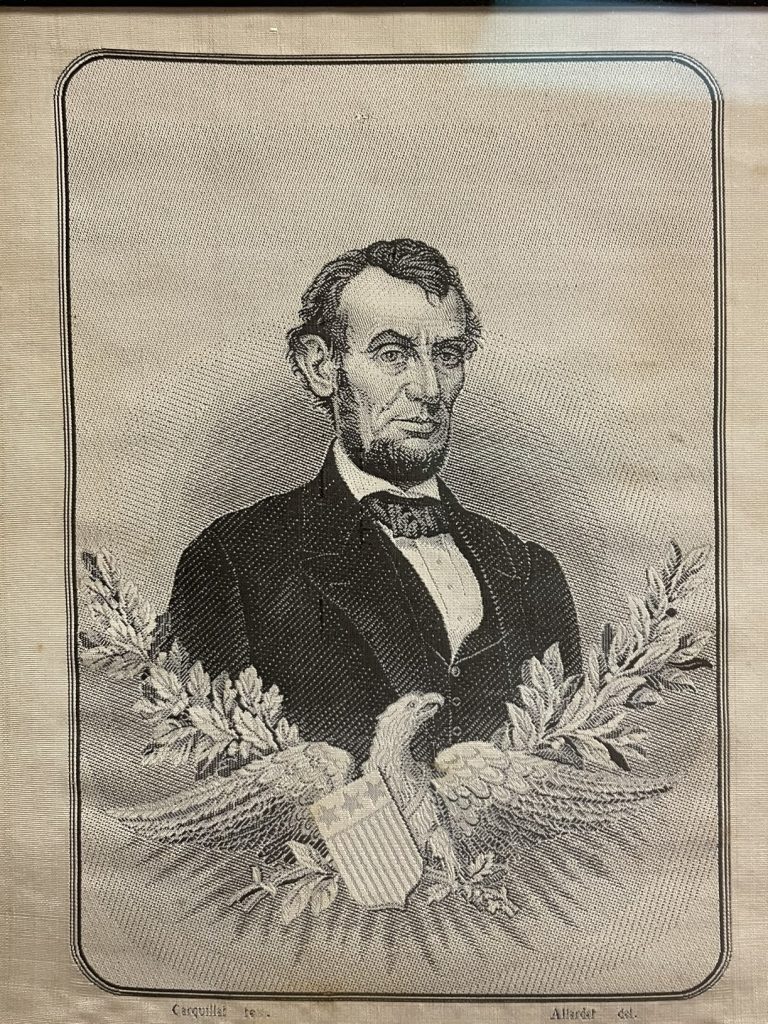
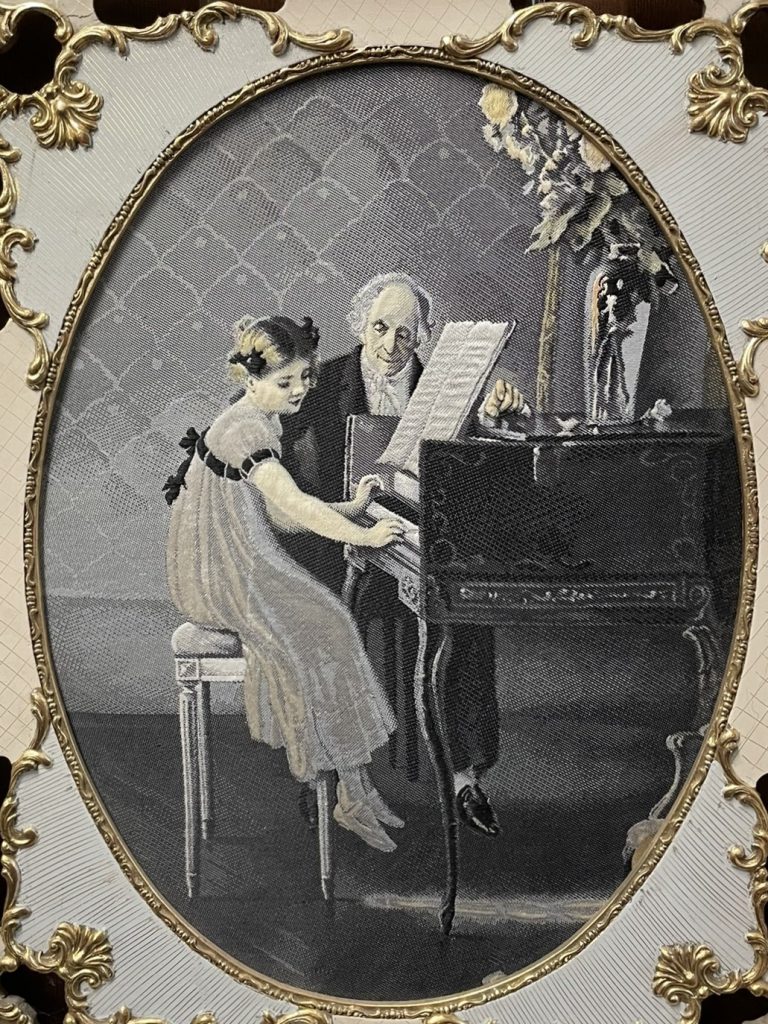
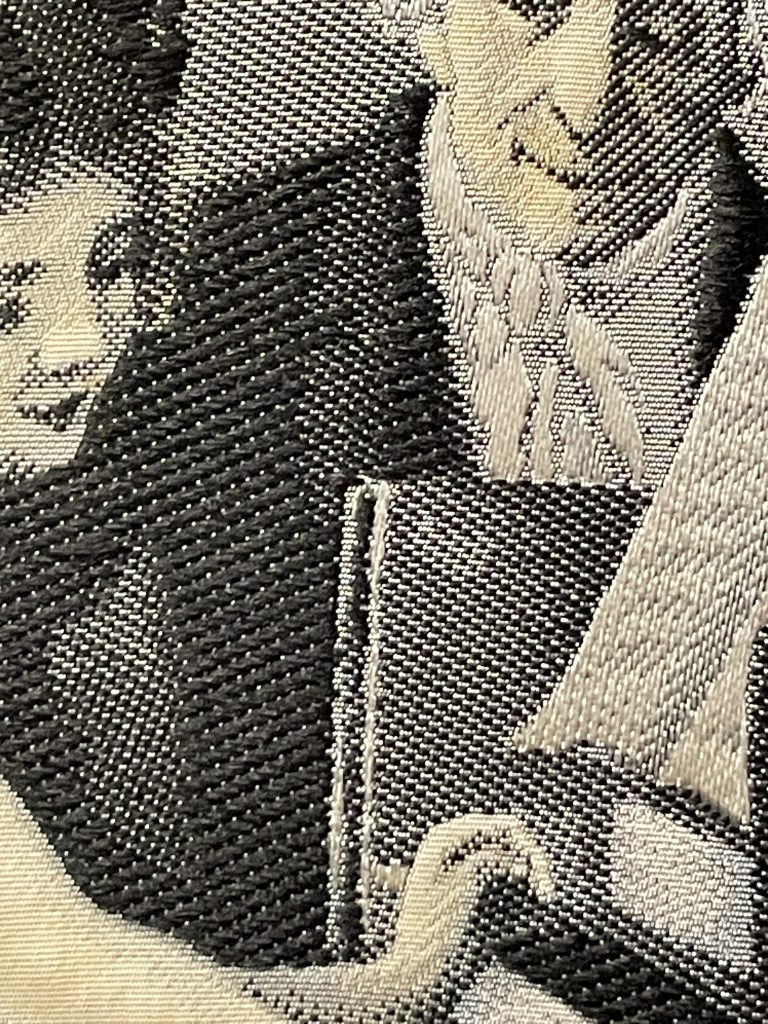
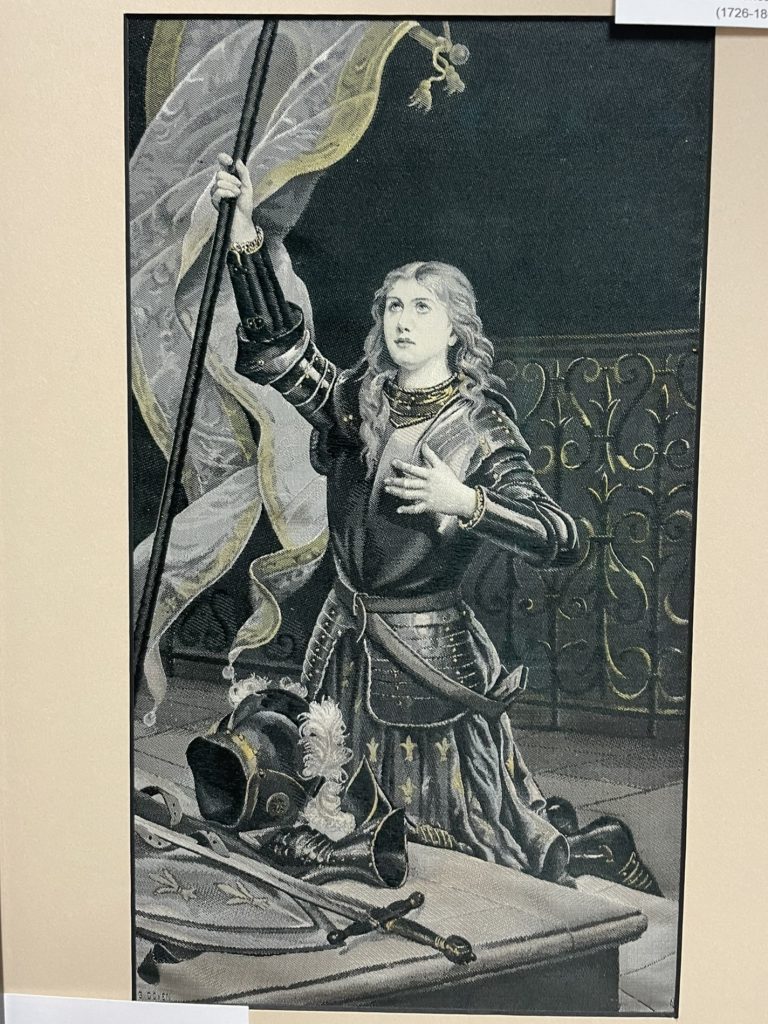
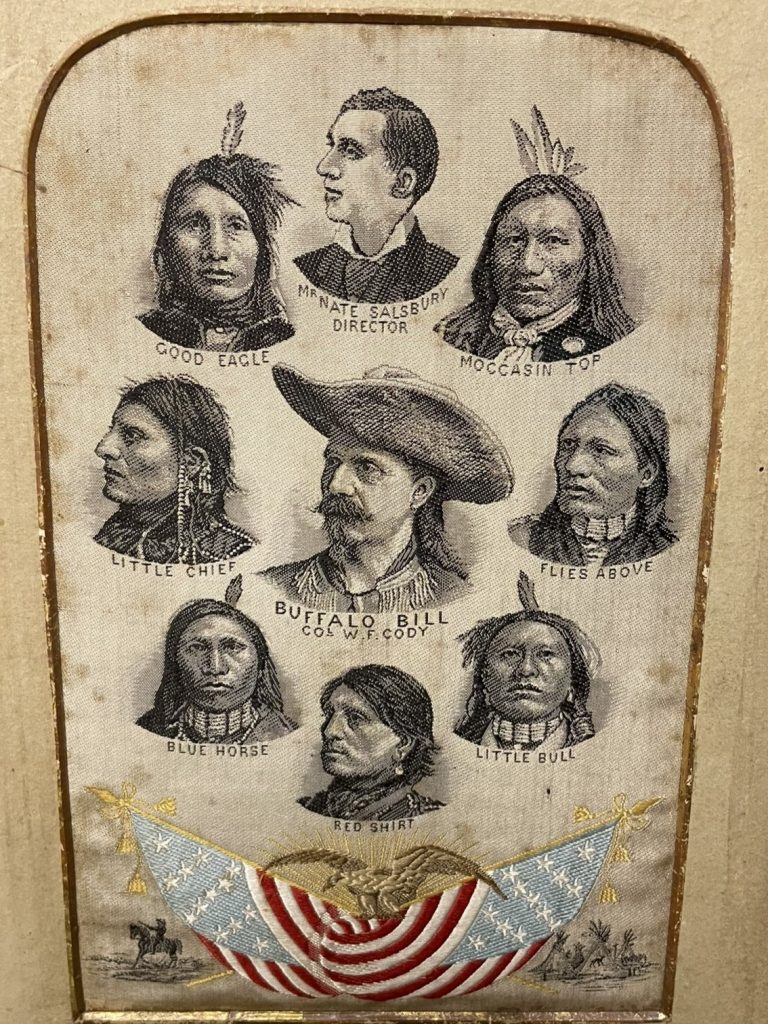
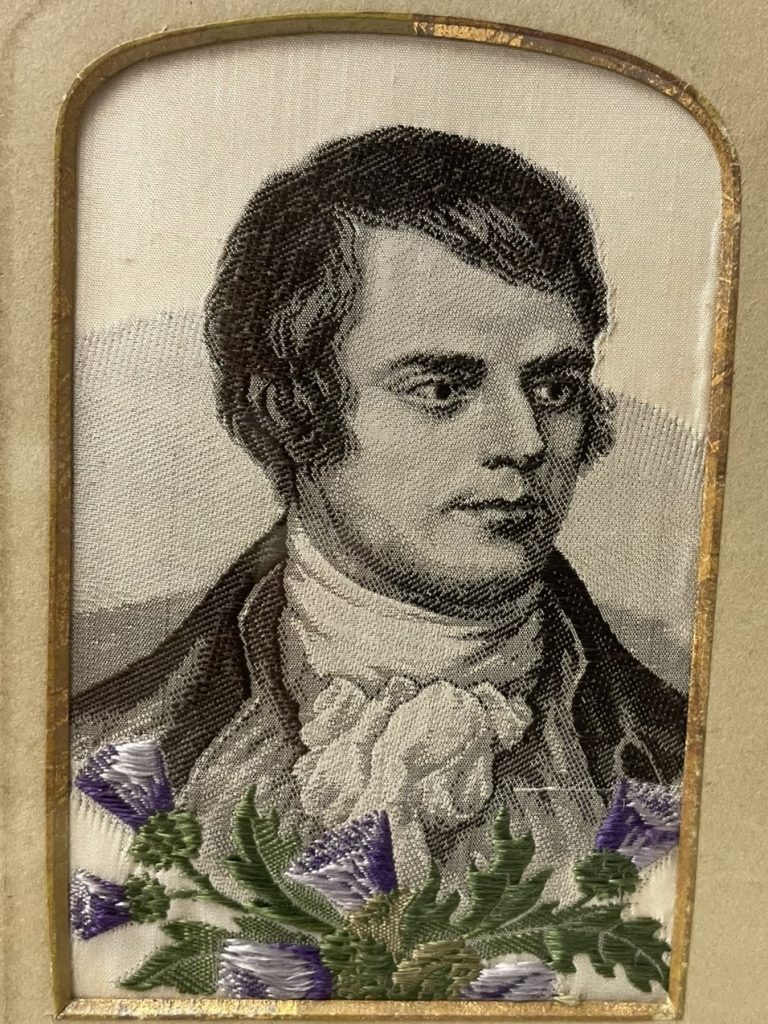
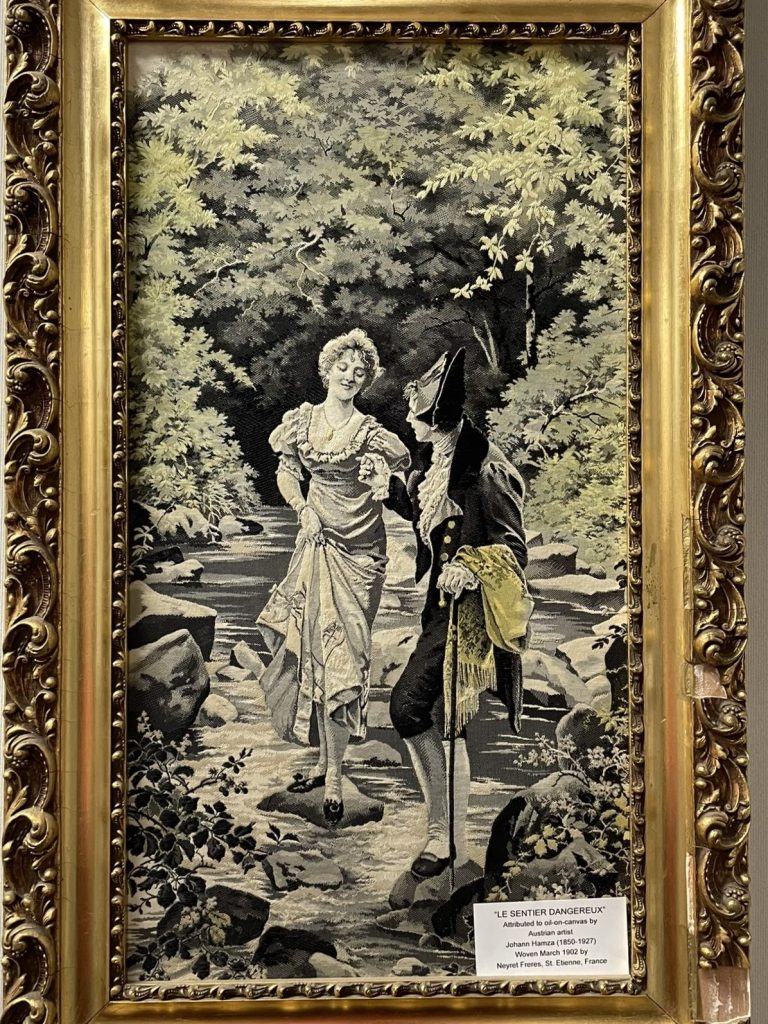
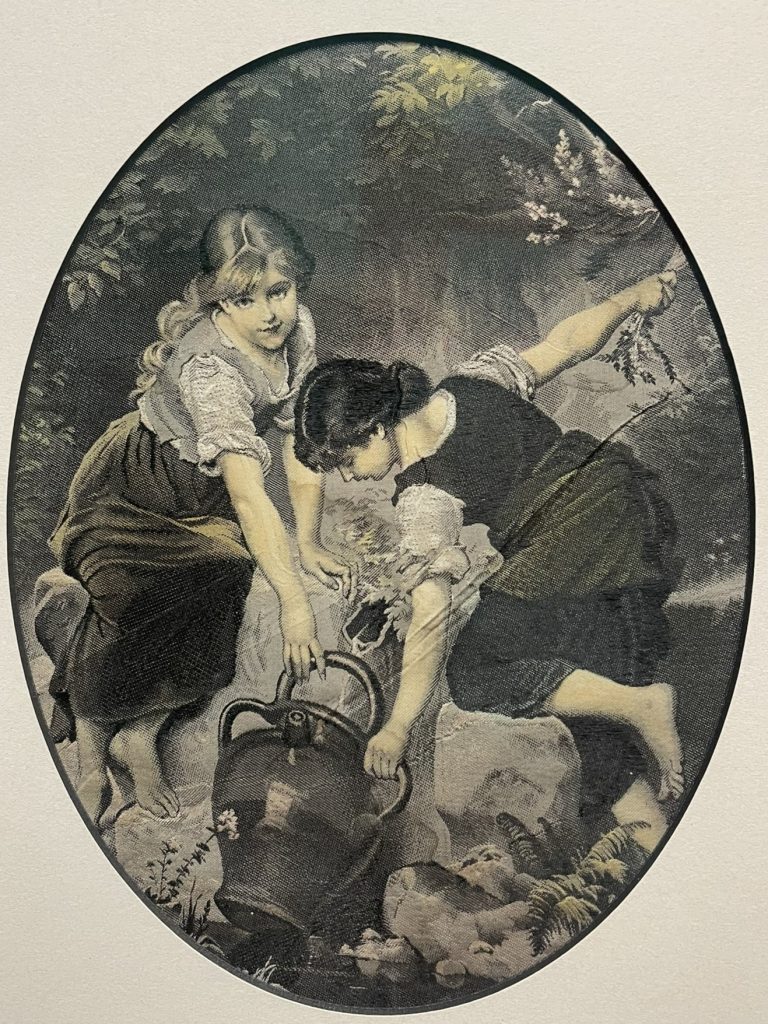
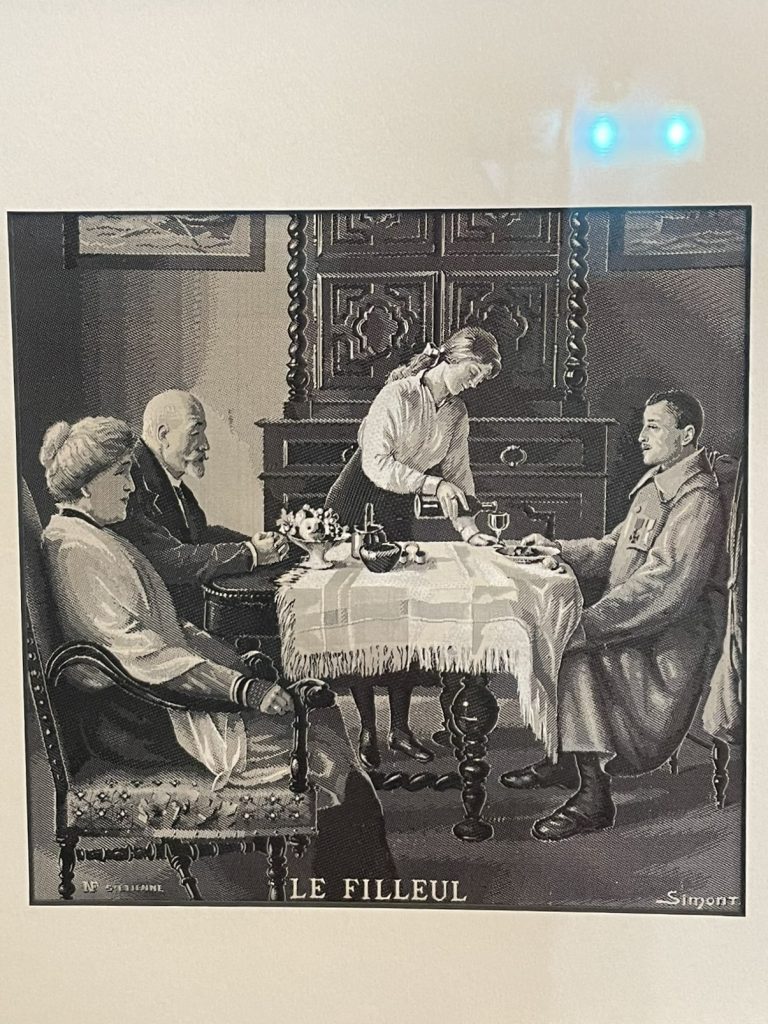





Most interesting post! Never heard of this art form before, looks amazing! Thanks for sharing.